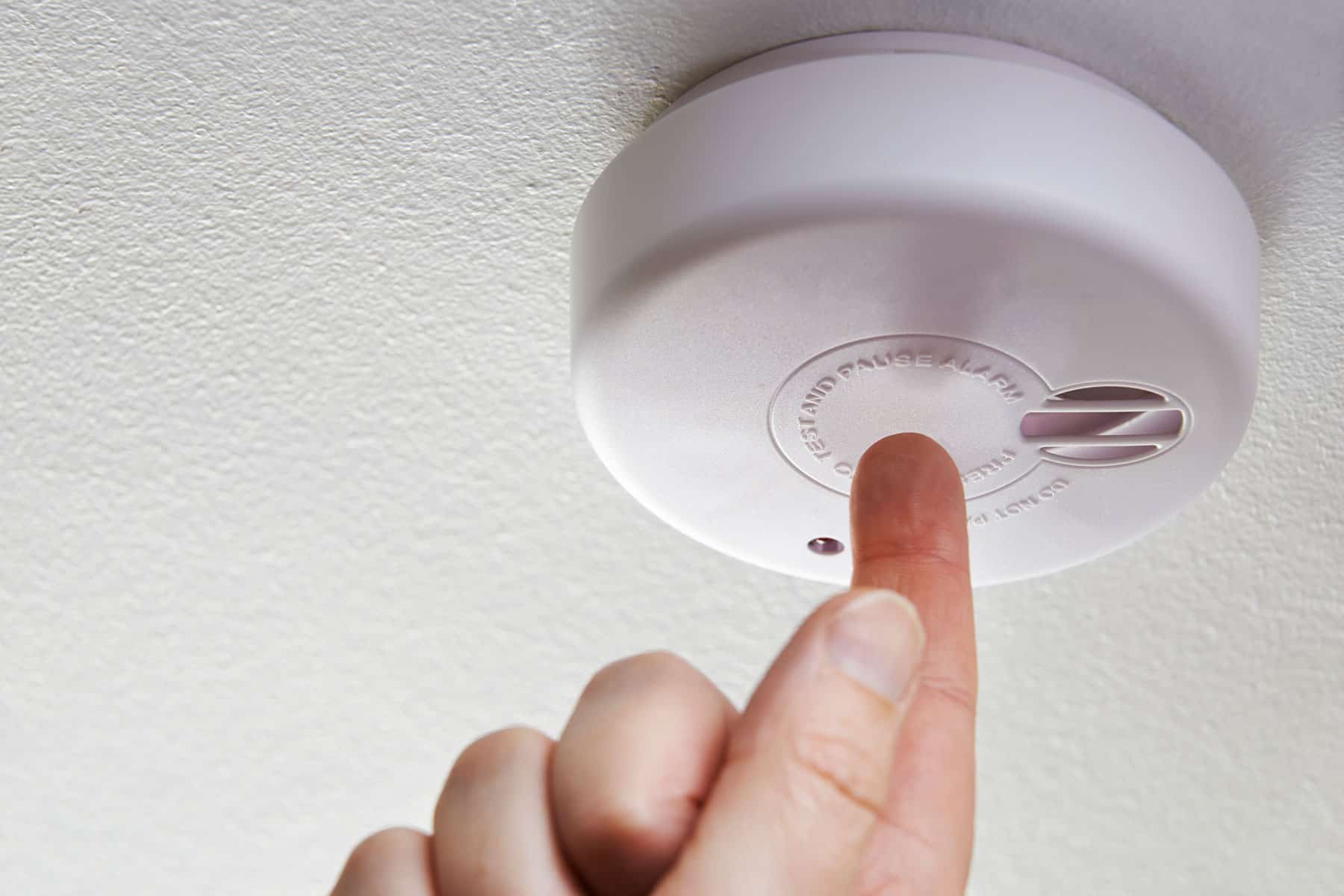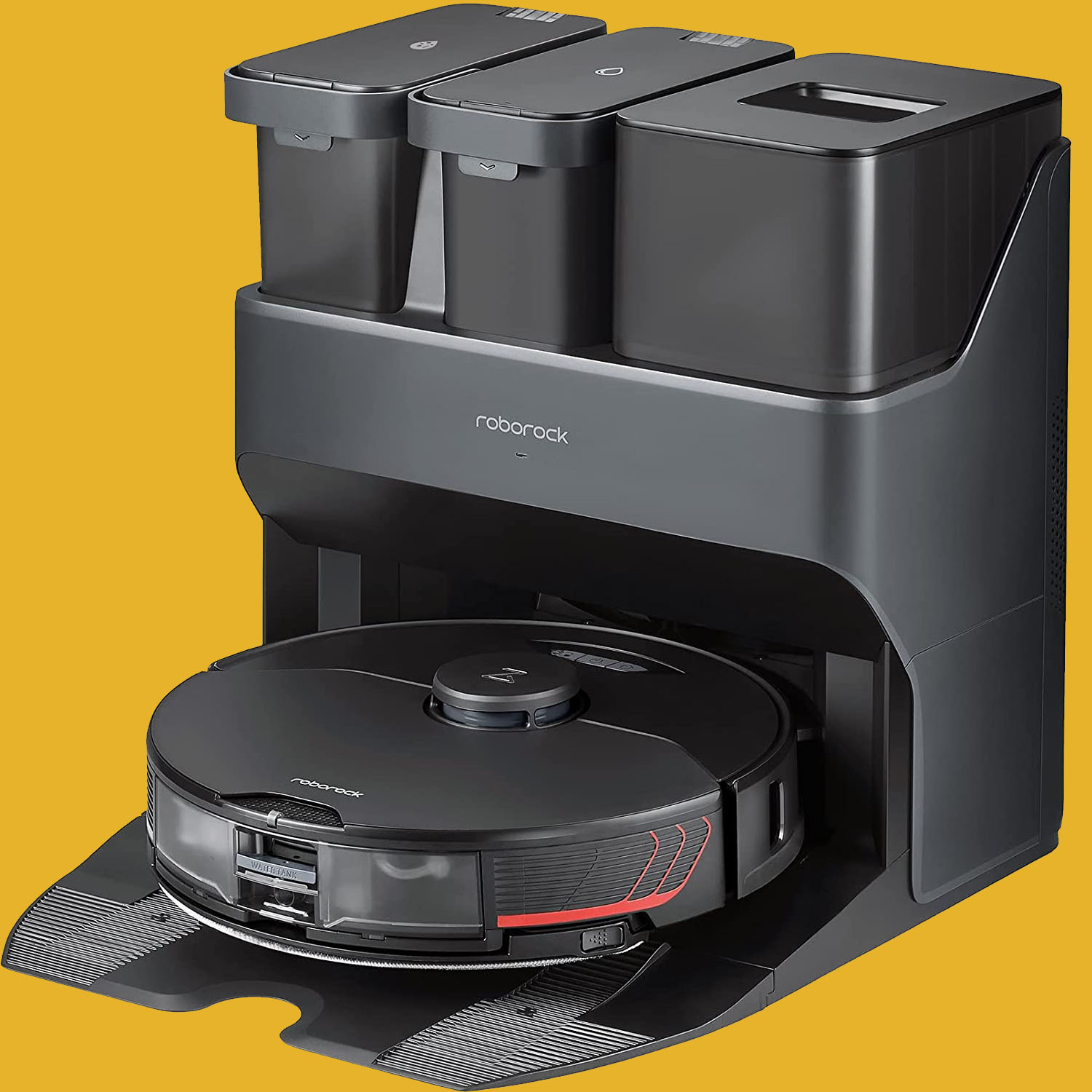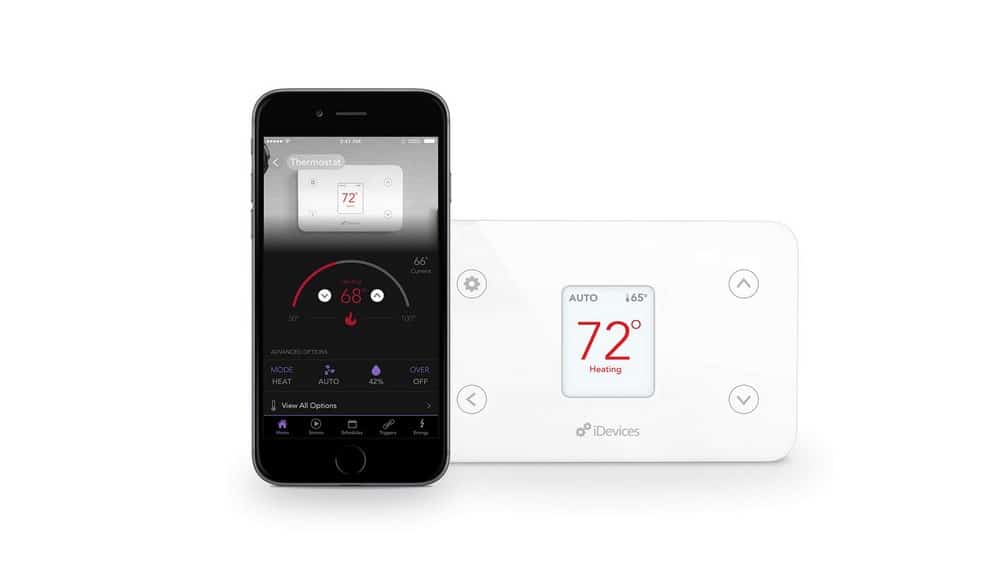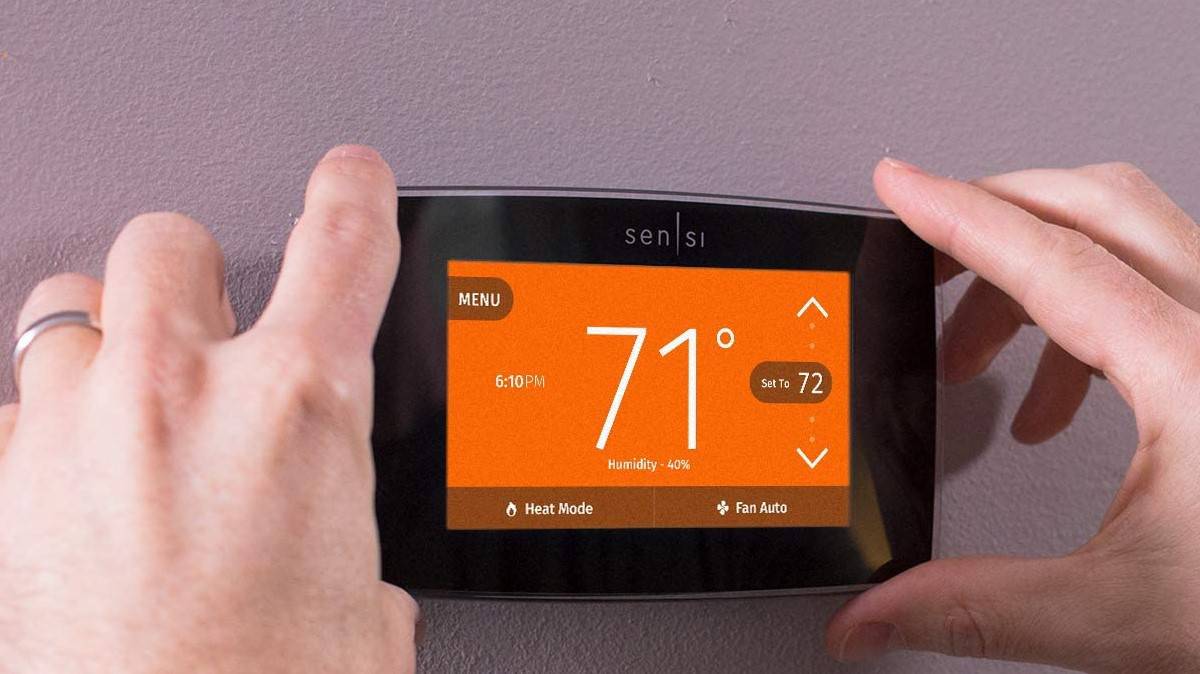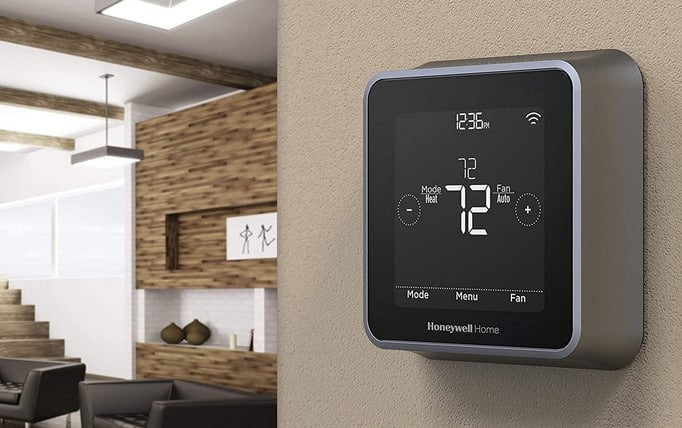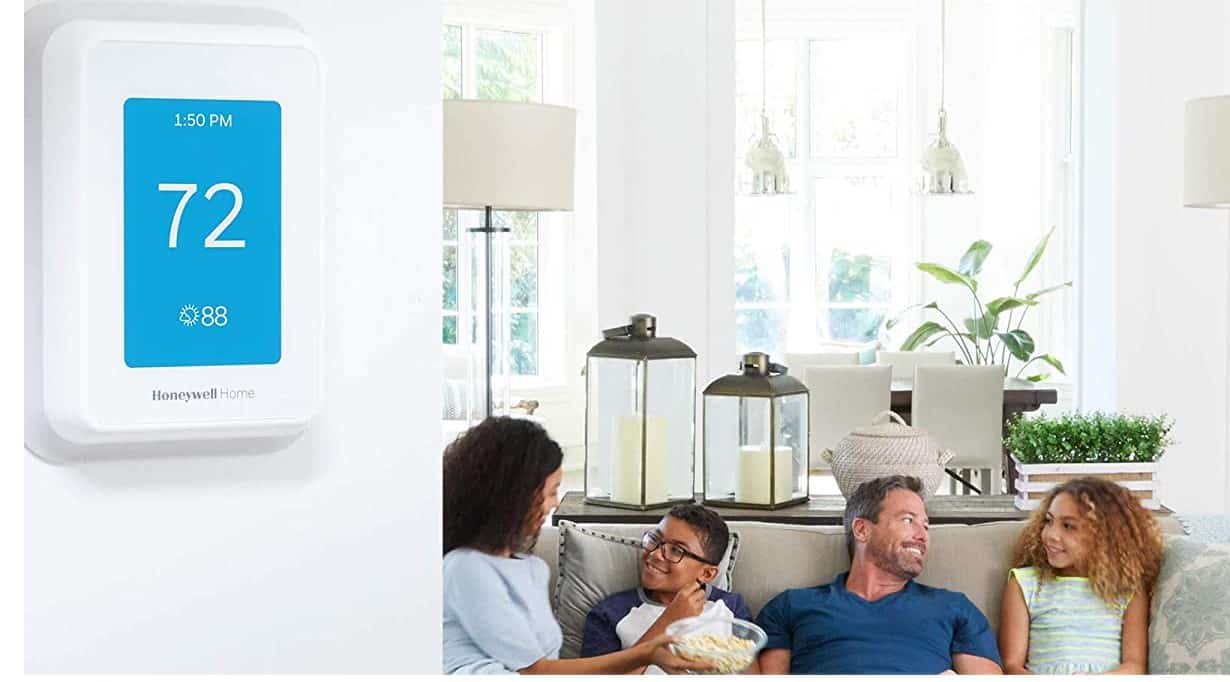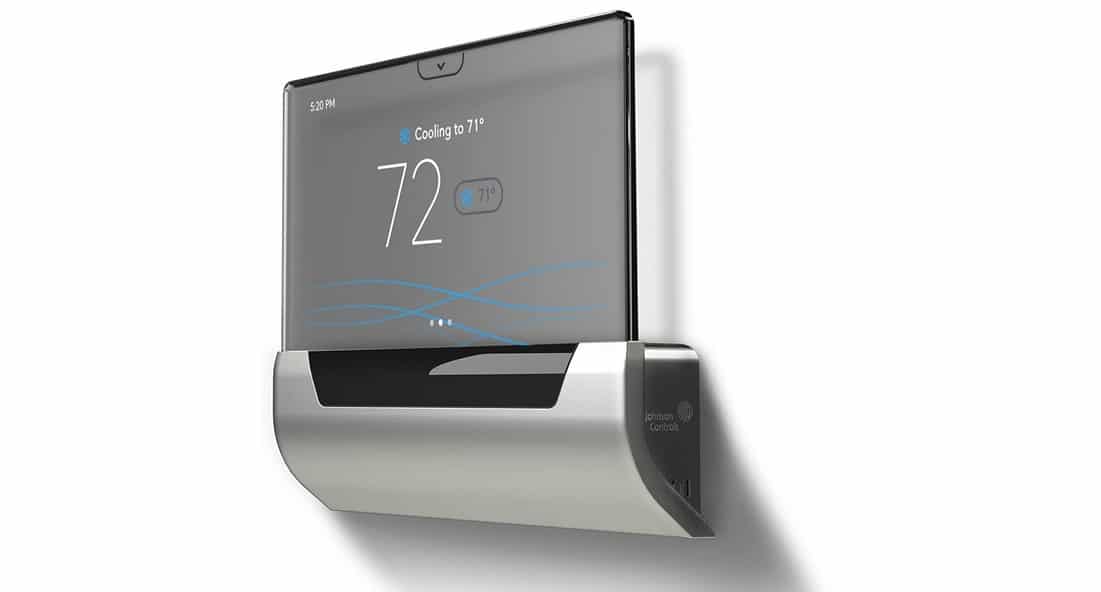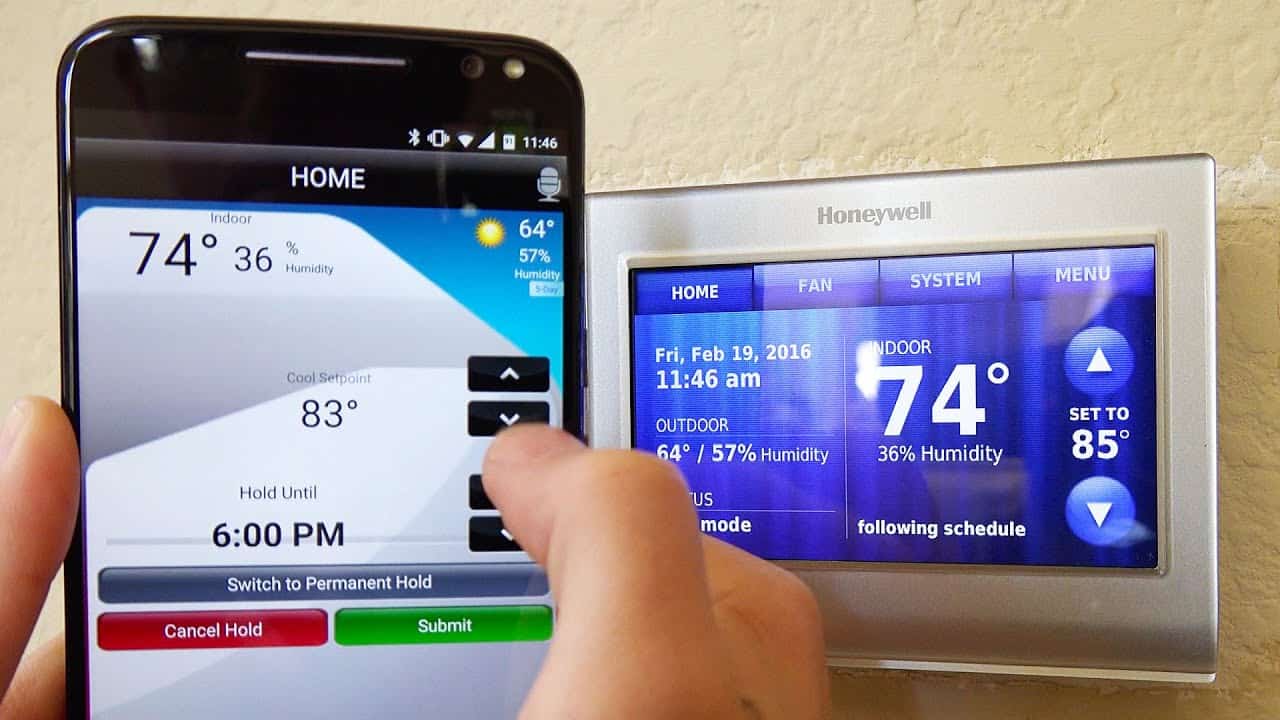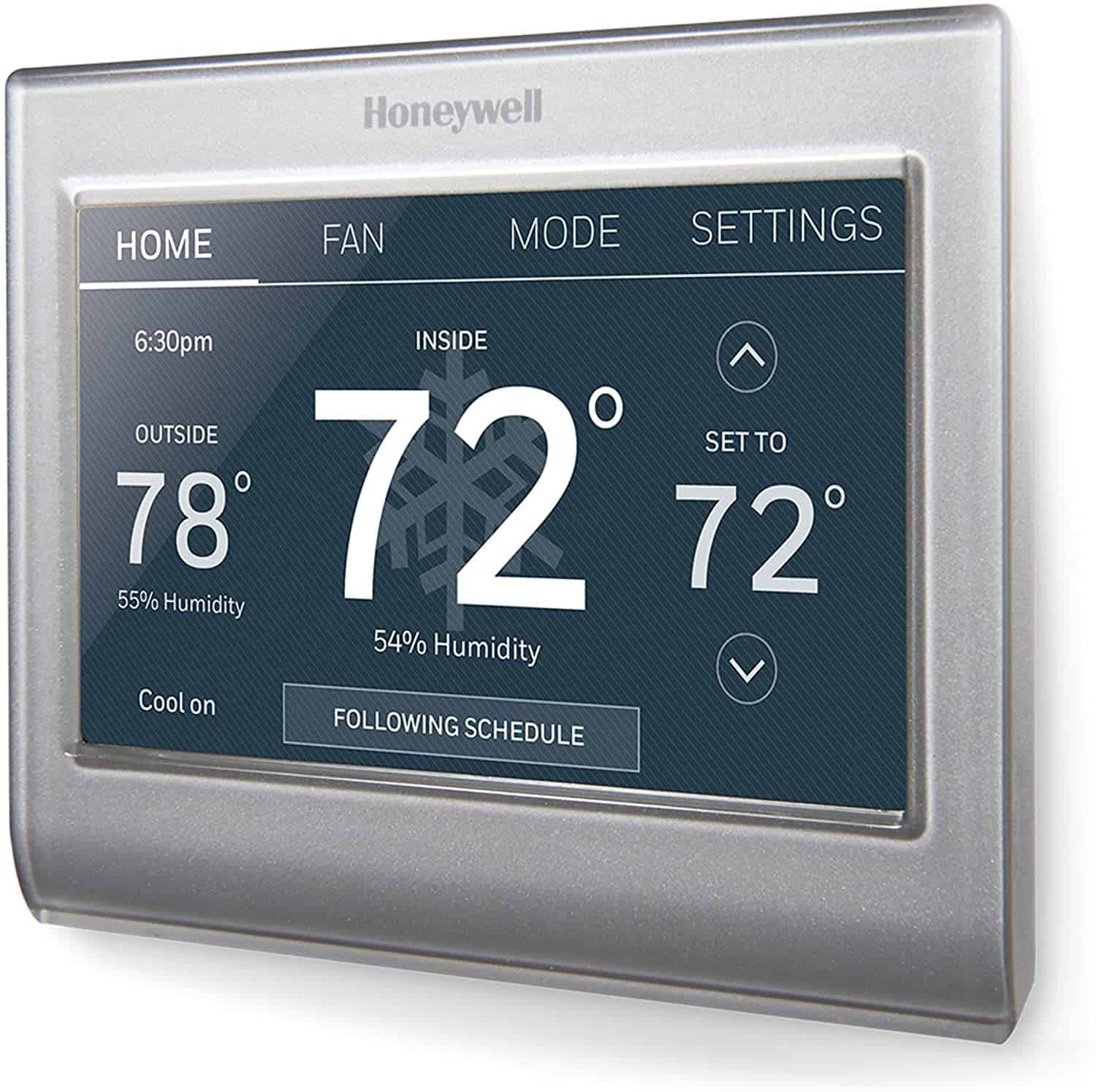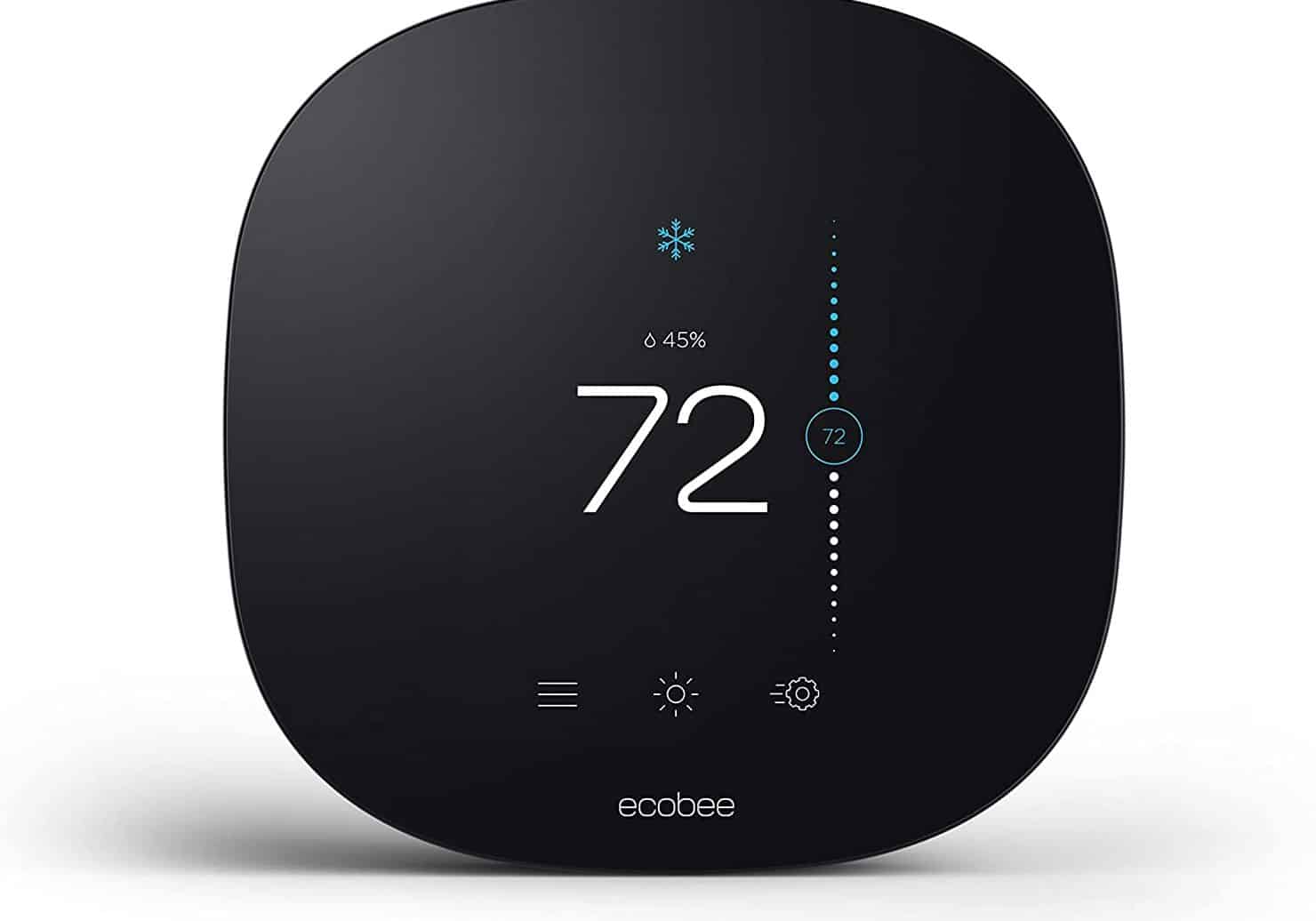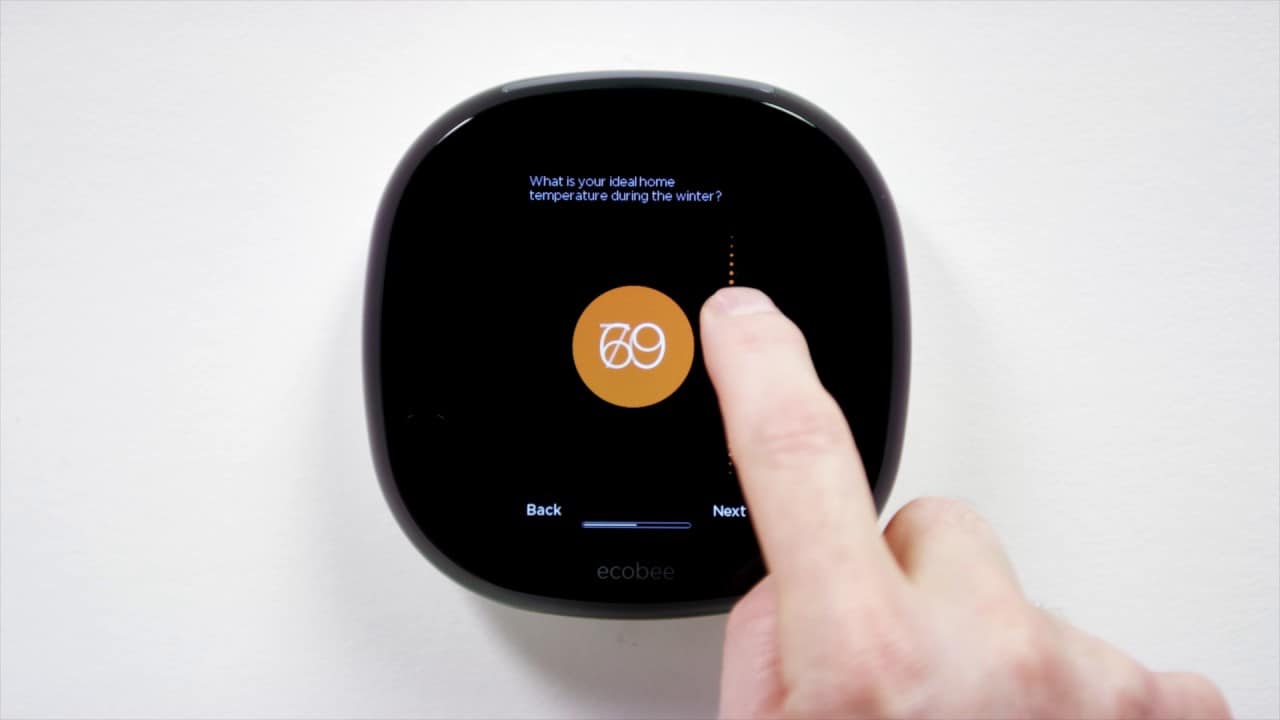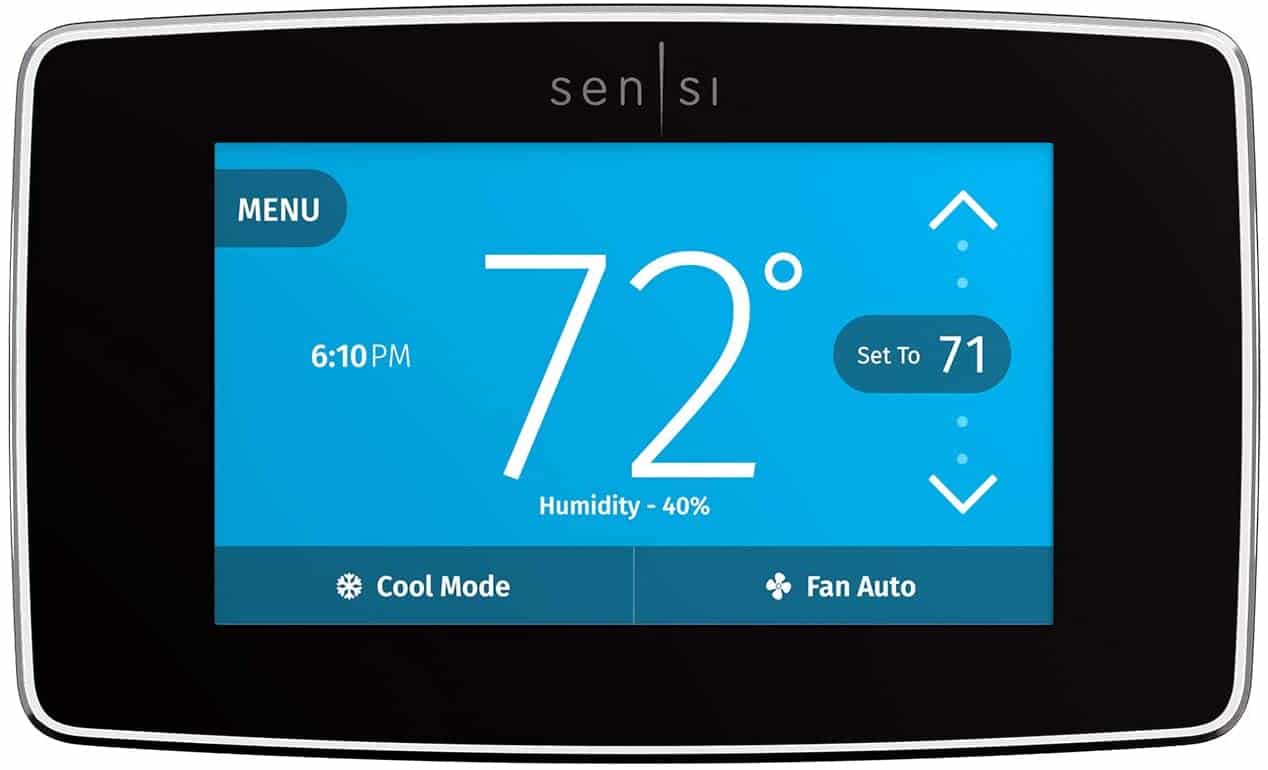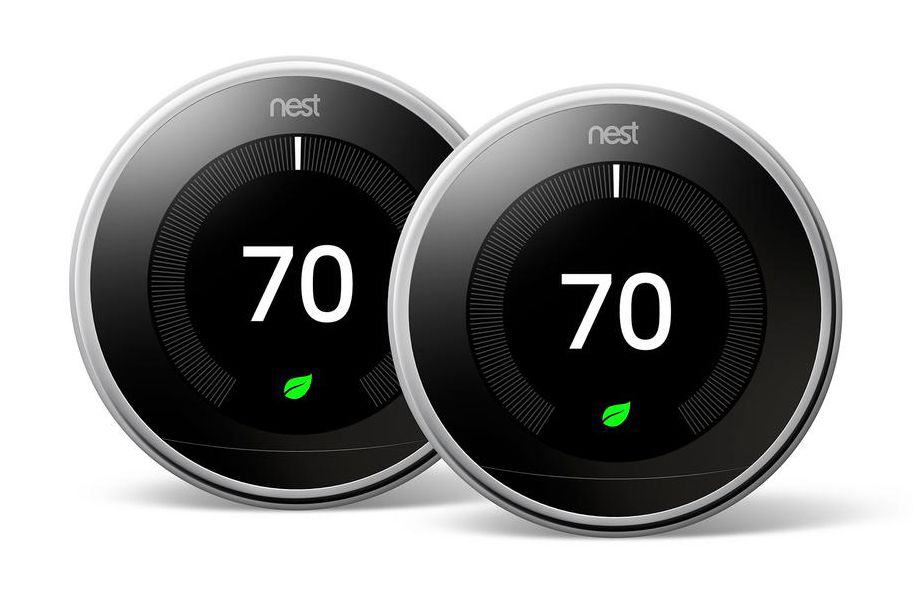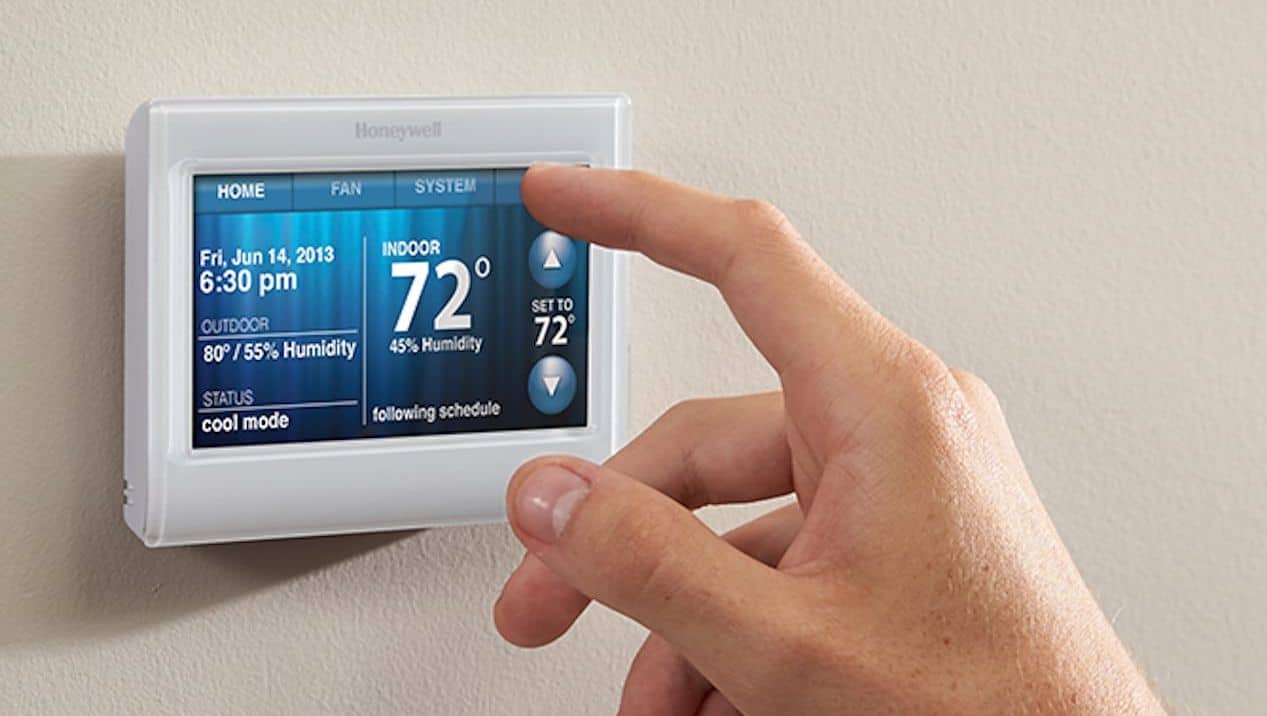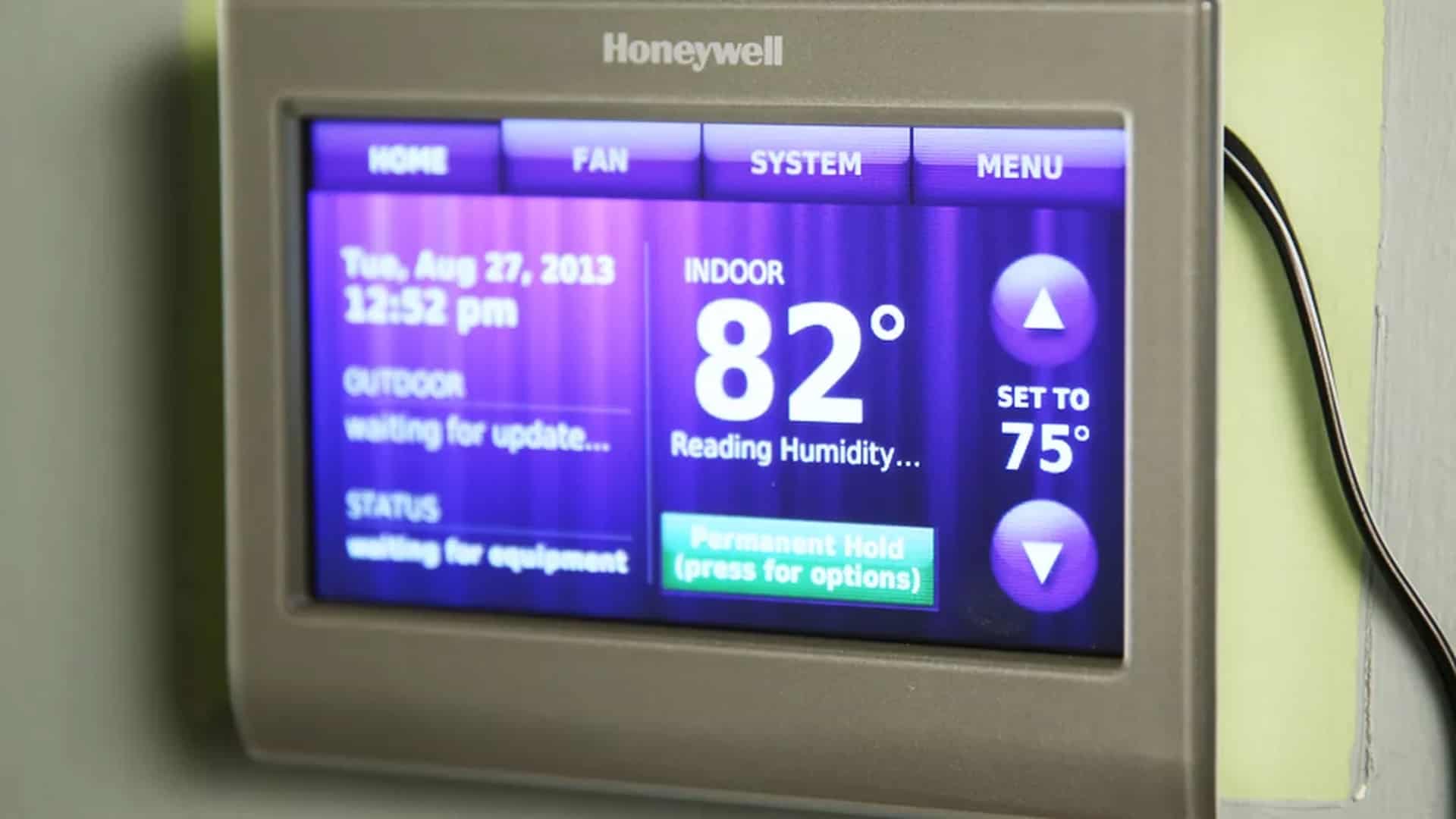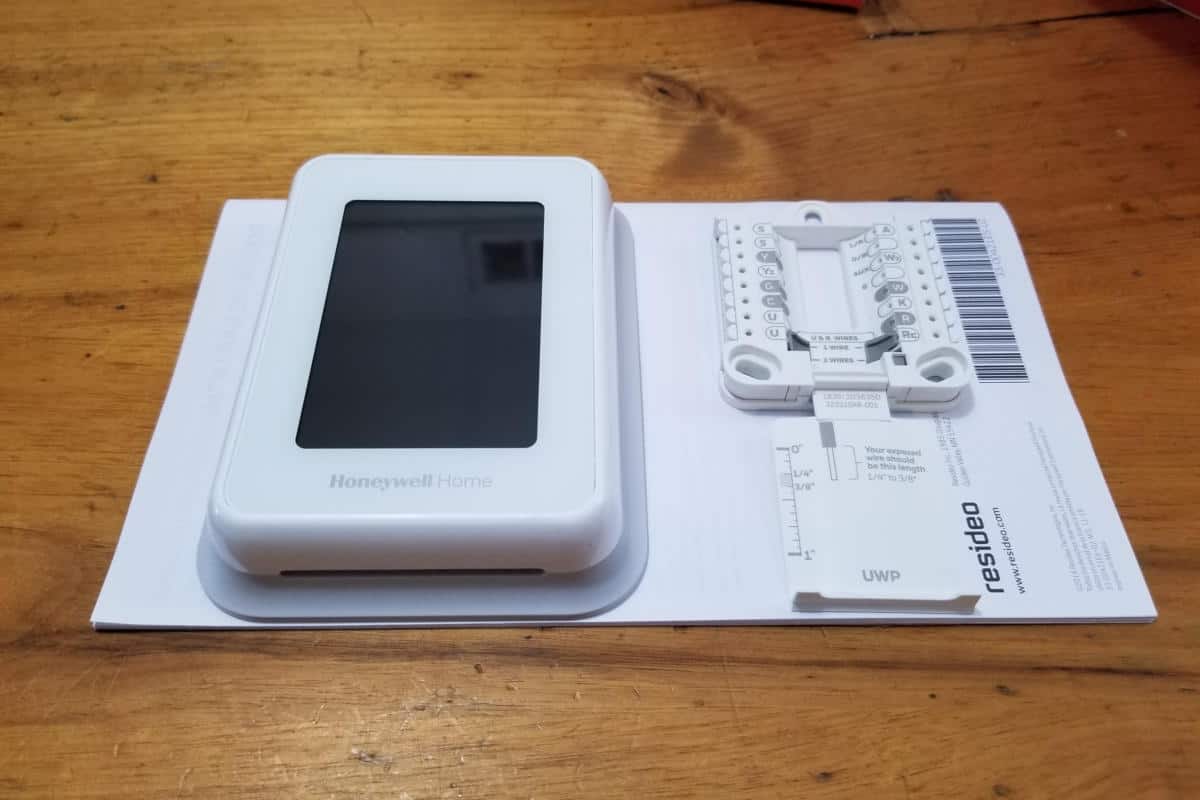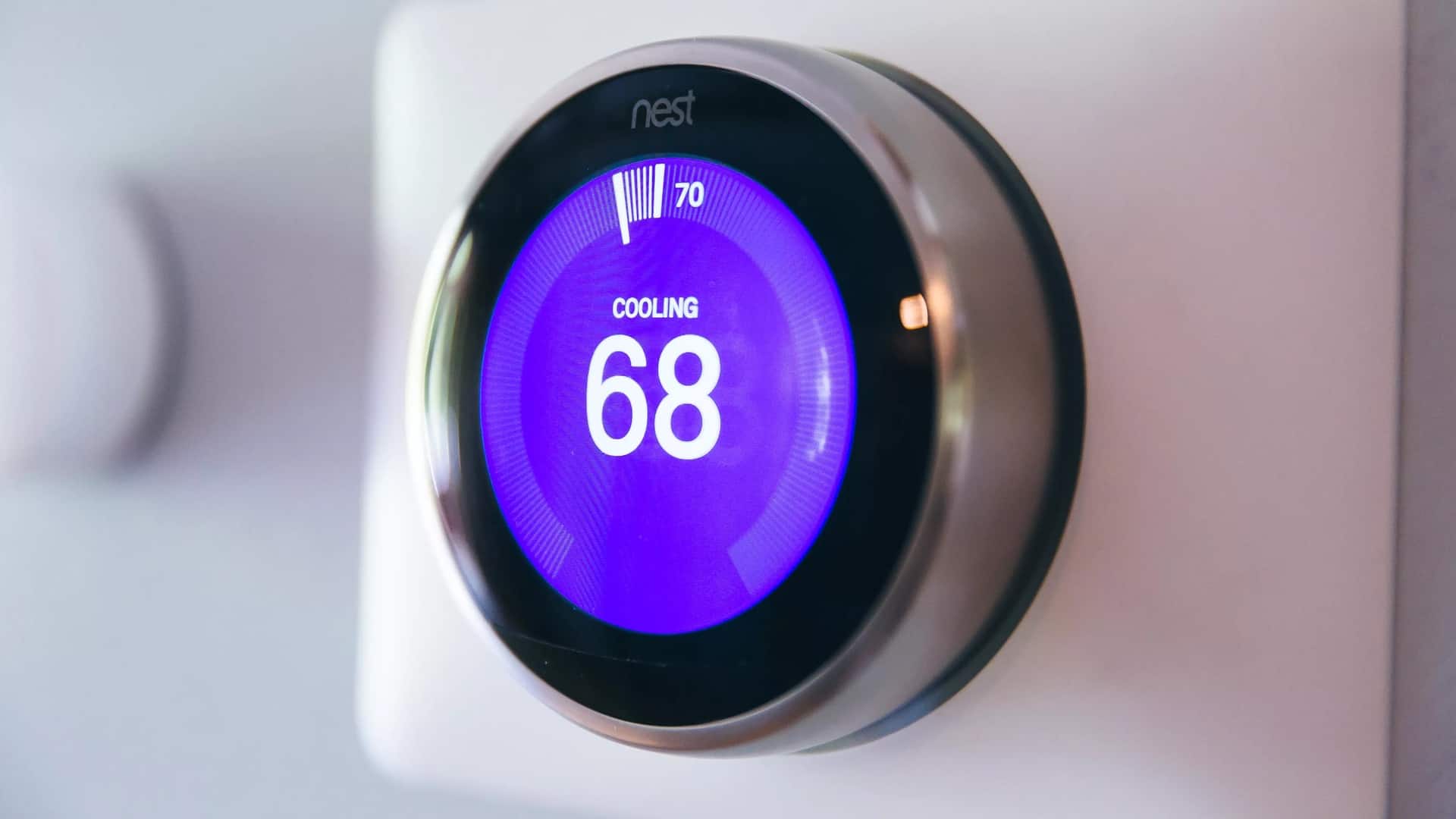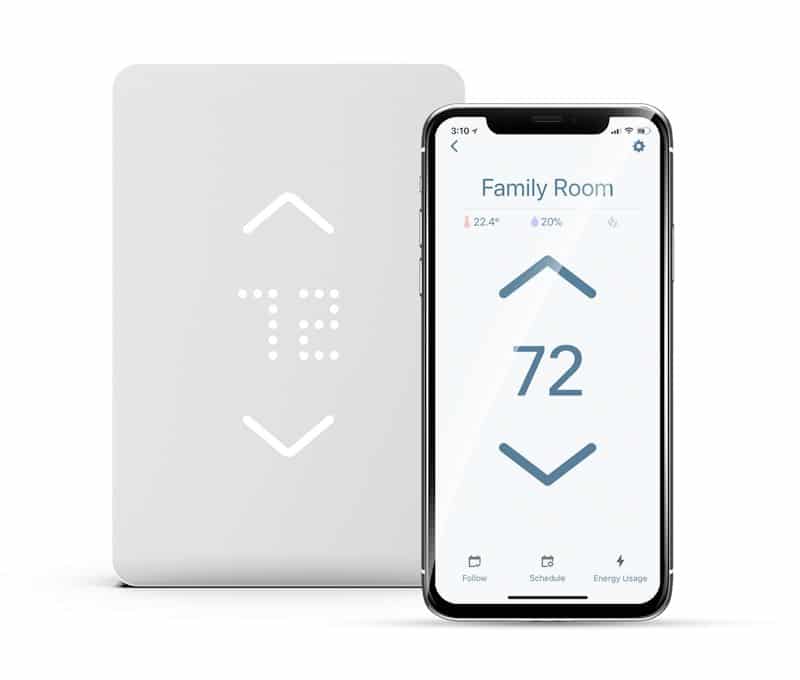Our search for the best smart thermostat continues.
Smart thermostats add both efficiency and ease of use to your house. Two of the most popular models are the Nest or Ecobee, competing brands that both offer great products. Which in all likelihood means you’re stuck pondering “Ecobee vs Nest” and which one to buy. Learn more about the Nest Learning Thermostat (3rd Generation) then read on.
We’re sorry, this product is temporarily out of stock
Ultimately, we decided that the 3rd generation Nest thermostat is the best upgrade choice for those switching to a smart thermostat. If you want to compare with another option, take a look at our review of Enphase energy’s enivorn smart thermostat (monitors your solar energy).
- With its especially large and customizable temperature readout, you can see the current temperature in your home immediately, then adjust the temp with a twist of the thermostat.
- That, plus great guides for installation or finding a professional to help you out, put the Nest on top.
To find the best model, we took a look at the current generation of thermostats for both brands, what features they provided, and how they’ll work in your home and which is most compatible for your not only your needs but your HVAC system. And if you’re looking to find homes built with eco-friendly materials, and that have smartphone synchronicity, take a look at these 13 futuristic and unique modern homes.
We tested settings, opened apps, and turned dials to see how interfaces worked, how much information the thermostats provided, and how visible their data was. We also tweaked settings to see how well thermostats responded, and what advice they gave about
However, the Ecobee4 is also a remarkable smart thermostat, especially if you like your thermostat screen to show more data, or if you don’t have an Alexa voice assistant yet and are intrigued by the idea.
And in case you missed it, we also take a look at some of the alternative best smart thermostats on the market in a previous post.
- The Top Smart Thermostats of 2018
- Nest Smart Thermostat 3rd Gen – #1
- Ecobee4 – #2
- Smart Thermostat Buyer’s Guide
- Top Smart Thermostat Questions Answered
Ecobee vs Nest Compared 2018
Ecobee4 vs Nest Thermostat 3rd Generation
| At-a-Glance Screen Data | Energy Monitoring | Sensors | Screen Diameter | HVAC Compatibility | Voice Assistant | |
|---|---|---|---|---|---|---|
 Ecobee4 | Current Inside temperature, weather, humidity, temperature range | Temperature (satellite versions available), humidity, occupancy, proximity | 3.5 inches, square | Gas, oil, electric, dual fuel, Conventional (2H/2C) setups, Heat pump (4H/2C) setups, humidifer, dehumidifier, ventilator, HRV or ERV | Built-in Alexa | |
 Nest Thermostat 3rd Generation Nest Thermostat 3rd Generation | Current/Set temperature, Eco-friendly icon | Temperature (satellite versions coming), indoor humidity, proximity, near-field activity, far-field activity, ambient light | 2.08 inches, round | Heating (1-3 stage), Cooling (1-2 stage), Heat pump (including aux/emergency heat), humidifier, dehumidier, fans (1-3 speed) | compatible with Alexa, IFTTT, Google Home |
Ecobee3 vs Nest Thermostat 3rd Generation
| At-a-Glance Screen Data | Energy Monitoring Reports | Sensors | Screen Diameter | HVAC Compatibility | Voice Assistant | |
|---|---|---|---|---|---|---|
 Ecobee3 Ecobee3 | Current Inside temperature, weather, humidity, temperature range | Temperature, motion, proximity, humidity, remote sensor for temperature and motion | 3.5 inches, square | Conventional (2H/2C), Heat pump (4H/2C), Gas, oil, electric, dual fuel, humidifier, dehumidifier, ventilator, HRV or ERV | HomeKit, Alexa, SmartThings, IFTTT, Wink | |
 Nest Thermostat 3rd Generation Nest Thermostat 3rd Generation | Current/Set temperature, Eco-friendly icon | Temperature (satellite versions coming), indoor humidity, proximity, near-field activity, far-field activity, ambient light | 2.08 inches, round | Heating (1-3 stage), Cooling (1-2 stage), Heat pump (including aux/emergency heat), humidifier, dehumidier, fans (1-3 speed) | compatible with Alexa, IFTTT, Google Home |
At-a Glance Screen Data
This refers to what the thermostat shows you when you walk past. At first glance, this is one of the biggest differences between the Nest and Ecobee models. The Ecobee has a much more traditional touchscreen appearance, with the current temperature display in bold white numerals. The screen also gives you information on the thermostat’s current temperature range, a little icon for the weather outside, and the current humidity: however, for all these extras, you need to step very close to the thermostat to see them, so they aren’t quite as useful.
The Nest takes the opposite approach. It only shows the temperature at a glance, popping it up in big, bright numerals whenever it detects someone is nearby. While you can change whether it shows the current or target temperature, this is the only information that the Nest gives (plus a small range icon showing how far the current temperature is from the set temperature). The Nest cannot display humidity, weather, or other information on its physical screen. The screen can be used when you are manually changing settings – but this isn’t really at-a-glance information.
Energy Monitoring
Both the Ecobee4 and the Nest 3rd gen provide energy monitoring. In practice, this means that you can go into either app and see your heating/cooling history over time, along with how much energy you’ve been using.
Both thermostats will also email you energy reports, typically on a monthly basis, that show how much energy your HVAC system has used that month and how it compares to previous reports. Obviously the goal is to lower your energy consumption and save money on your bills, and both companies do a good job of aiding you in this. However, it’s important to remember that some months your energy use will naturally rise as you turn up the heat in winter or the AC during hot months.
Read: https://www.gadgetreview.dev/6-of-the-best-wifi-thermostats
Sensors For Automation
Smart thermostats depend on a much broader variety of sensors than traditional thermostats, allowing them to pick up on all kinds of information. Both the Ecobee and Nest have the basics like temperature and humidity sensors, but they diverge from there.
The Ecobee4 specializes in satellite temperature readings. It comes with a satellite sensor option that you can set up in a remote location and then connect to the primary thermostat. Have you ever been in a house where one side was too hot and the other side too cold? A satellite sensor can help fix this by providing information on temperatures far away from the thermostat itself.
The Ecobee can also read occupancy and proximity, a.k.a. how many people are moving around in the room, and how close someone is getting to the thermostat (so it can light up).
The Nest, on the hand, is far more focused on those occupancy and proximity sensors. It includes high-tech movement sensors that detect “near-field” and “far-field” activity so it can judge how many people are in the room, where they are, and how they are moving. This helps the Nest set more accurate automatic schedules even if you’re not close to it.
But it’s worth noting that Nest has officially announced it will also be offering satellite sensors for its thermostats as well, although it is not currently an option.
We’re sorry, this product is temporarily out of stock
Screen Diameter
How big do you want your thermostat screen to be? The Ecobee4 offers a larger 3.5-inch screen that’s easier to use and navigate, but also takes up more space on the wall (and can be brighter at night).
The Nest goes for a more minimalistic route with a tiny, round 2-inch screen. It doesn’t take up much room at all (and remember, doesn’t display much extra information). However, you have to get particularly close if you want to view and change any settings, which could take some time.
HVAC Compatibility
This spec is a little more complicated, because there are many different types of HVAC setups based on the units installed and how they are wired into your electrical system. The thermostats are designed to work with as many units as possible, but they aren’t 100% compatible with everything. This spec covers:
- Fuel type: Not really an issue, since both thermostats can work with gas, oil, electricity, and many dual fuel systems (the Ecobee makes a point of mentioned dual fuel compatibility, but we can’t see much difference between the two on this point).
- Heating and cooling stages: This is all that 2C, 3H business. This refers to how many sources of hot or cold air the HVAC system has. In a 2C (two-stage cooling) system, cool air is pulled from two different types of air conditioners. In a 2H (two-stage heating) system, warm air may be pulled from a furnace and a solar heating panel, or a furnace and a boiler. This allows for all sorts of combinations – most of which are pretty rare. The average home has a one-stage HVAC system and won’t need to worry about compatibility, but it’s good to be aware.
- Heat pumps: Heat pumps are an oddball, since they reverse their refrigerant systems to heat or cool as needed. It’s very efficient, but hard to lump in with the rest. The Ecobee model supports 4H/2C heat pump setups, which is basically every residential heat pump. Nest specifically states that it supports heat pumps with auxiliary or emergency heating (usually from an electric heating element), which is slightly narrower but should still work with most HVAC systems.
- Humidifiers/Dehumidifiers: This refers to humidifier and dehumidifier devices that are wired into your HVAC system and work alongside heating and cooling. This isn’t very common except in extremely dry or humid climates. Both units support these features.
- HRV and ERV: You’ll notice that Ecobee4 has HRV and ERV compatibility. This refers to Heat Recovery Ventilation and Energy Recovery Ventilation, features that help save energy at the cost of a certain amount of fresh air. Ecobee4 supports these features, but with a Nest you will have to set a separate timer for these functions via a different method.
Voice Assistant
We will discuss this more thoroughly below, but the Ecobee4 model has built-in Alexa, which means you can talk directly to the thermostat with commands and questions. The Nest thermostat is compatible with voice assistants like Alexa and Google Home, which means you have to link the Nest with other devices (like an Amazon Echo), and give those devices the commands instead of talking to the thermostat yourself.
Smart Thermostat Buying Guide
Looking for the best features in a smart thermostat? Even if you don’t end up purchasing an Ecobee or Nest, these are still some of the important factors you need to think about!
HVAC Compatibility: Not all buyers consider this, but it’s important to make sure that a smart thermostat actually works with your HVAC system! This may be a problem if you have a particularly old HVAC system with incompatible wiring, a system that’s controlled in a strange way that a smart thermostat can’t parse, or a system that already has some kind of complex control system in place (such as may be needed if you use solar heating or geothermal heating). That being said, around 95% of home systems should be compatible with smart thermostats like Nest…just check before you buy.
Additional Information: What additional information does the thermostat provide? The Ecobee4 is particularly good at showing data about humidity, weather, timers you’ve set, and so on. The Nest is far more minimalistic and doesn’t display much except the temperature. What system do you prefer? It probably depends how much time you spend studying your thermostat in daily life.
Room Sensors: The Ecobee model is one of the only versions on the market that provides room sensors, additional devices that transmit temperature information to the thermostat. These are designed to solve a specific problem, the issue of cold spots or dead zones. Sometimes thermostats are installed in drafty hallways, or maybe remote walls where no one gathers. This means the thermostat may read the incorrect temperature and tend to keep the house too cold or too hot, even when set precisely. If you have this problem, a room sensor can help give the thermostat better directions, and the Ecobee model is probably the one for you.
Readability: This is more difficult to tell unless you see the thermostat in person, but the numbers need to be readable. Look for large, clear numbers that you can see at a glance without getting too close to the thermostat. Nest does a good job at this by using “Far Sight” to detect nearby movement and flashing the temperate in large numbers when someone passes by. You can also switch between the current temperature and the target temperature, depending on what which you’d prefer to see.
Controls: App controls are pretty self-explanatory (a bit more on this below), but many people are accustomed to walking right up to the thermostat and changing it on the spot, so thermostat-based controls are still important. Controls can vary a lot, too – the Nest uses a dial-based interface where you spin the thermostat and then push it to select, which takes a lot of getting used to, although switching the temperature is very easy. Ecobee uses a more traditional touchscreen approach, but changing the temperature takes more effort. This is another one of those features that’s difficult to understand unless you experiment in person, but it’s certainly worth noting.
Energy Notifications: Does the smart thermostat help you save money? Specifically, does it tell you when you are setting temperatures that will lower your energy costs? The Nest has a little green leaf that pops up when you set a temperature that can save you money. The Ecobee offers advice and instruction on how to manage your heating or cooling. Other thermostats also have alerts and icons designed to help with energy management. Look for these features!
Having trouble making up your mind between our top two picks? Both Nest and Ecobee offer excellent devices that span several different generations, at similar price ranges, with similar energy saving and smart programming benefits: It’s no surprise that making a choice can get tricky. We suggest you narrow it down to two important questions:
How do you use voice assistants like Alexa in your home?
The Ecobee4 is particularly invested in Alexa compatibility and on-unit speakers for talking with Alexa. Do you already use home voice assistants? Do you prefer assistants besides Alexa? Is your thermostat in an area where it would be difficult to talk to it? If you aren’t going to use all those Alexa features (or you already have an Alexa device you prefer), then the Ecobee4 has a lot of wasted potentials, and the Nest may be the better option.
What do you like to see on your thermostat?
As we mentioned, The Nest thermostat keeps things really simple, with a basic interface that shows current and target temperatures (with a choice on which appears in larger numbers). That’s about it unless you open up the app to learn more. The Ecobee4, meanwhile, provides information on humidity, weather, and other information right on the screen – you just have to get a little closer to read it all. If you like using a thermostat or similar device to check on these conditions instead of popping open an app, then the Ecobee model may be right up your alley.
“What exactly does the thermostat app do?” This is always a good question for homeowners to ask when buying a new smart home device. Here are the major features these apps usually include (particularly the Nest and Ecobee apps):
- Temperature: Pop open the app, and you can see what the temperature is right away on your thermostat, or multiple thermostats on the account. Pretty easy to understand.
- Other Info: The app home screen will usually show related information gleaned from your location, like the weather, humidity, and so on. This allows you to pop open the app for a quick look at the current temperature at your home, and if you maybe want to change it based on the weather report.
- Fan Controls and Modes: Your system probably has a couple different circulation modes – the app allows you to switch between them, as well as switching to new smart options like energy-saving modes. Some controls may allow for more manual control of the fan too, like, “Keep the fan running for the next 15 minutes.”
- Scheduling: Scheduling is much easier on an app! Smart thermostat apps give you an interface to quickly set a weekly schedule of temperatures and make quick changes at a glance. It’s a lot easier than programming an old thermostat.
- History and Reports: These apps also tend to provide the recent history of thermostat use, and reports on long-term use. You can use these to see how much energy you are using in a monthly, and how your energy habits have changed over time. This is useful if you want to save money and are trying to learn new heating/cooling habits.
- Smart Home Settings: The apps may also include extra smart home settings, depending on thermostat features. For example, Ecobee lets you create a Vacation setting that changes the temperature to low energy use when you are gone. These features may be useful, or you may end up ignoring them – it’s a mixed bag
If you went over our notes on the Ecobee4, you noticed that one of its most-marketed features is the built-in Alexa voice command system…which is sort of a problem if, say, you’ve invested in Google Home and don’t use Alexa. This raises the questions – should your smart thermostat connect to the rest of your smart home? Does it need to? Will it be compatible?
First, yes: your thermostat should connect to a shared smart home platform if possible.
The top contenders like Nest and Ecobee offer the most compatibility. Nest works with Alexa, which means you can link it to an Amazon Echo device and use Alexa voice commands to control the thermostat – and of course, Google Assistant compatibility is a given for Nest products (built-in Google Assistant features are likely coming in the next Nest generation).
Ecobee, meanwhile, offers built-in Alexa services and compatibility with Google Assistant – along with Apple Homekit, which means you could potentially use Siri voice commands if you’re willing to work at it. So far no thermostat uses Bixby or Cortana, but hey, they could be coming too.
Remember, even if you don’t use a voice assistant right now, or have many smart home devices, that could easily change in the future as smart tech becomes more common in the average home. Since thermostats last a long time, a little forethought can go a long way.
Energy-based rebates help encourage people to buy systems or devices that will save energy and help the environment. Can you get a rebate for your smart thermostat? It depends! Rebate programs are generally managed by the state and can differ greatly from state to state. States like California tend to have a lot of rebate options. Other states may have very few or none at all.
Sites like Ecobee are pretty good at notifying you if your state accepts the Ecobee smart thermostat when you visit, but otherwise, it may be difficult to know if you can get any kind of credit or not.
To learn more, visit this database and choose your state to find available programs. Take a close look at any incentive programs involving HVAC, thermostats, energy usage, and similar topics. Each program should have a list of devices that qualify for rebates or deductions. Check to see what smart thermostats are on the list! You could end up saving even more money than you expected.
However, keep in mind that to save money on your future energy bills, you will have to make some changes in your temperature settings. A smart thermostat can help you with that, but only if you switch temperatures from your old habits toward eco-friendly modes that use less power.
So, the big question after buying a smart thermostat is typically, “Wait, how am I supposed to install this when it arrives?”
If you have some experience working with the wiring in your home, it’s probably no big deal: you need a couple screwdrivers, a drill with common bit sizes, a wire stripper, and a couple other common tools – plus a sense of safety and the know-how to turn off your HVAC while you’re working.
As we note in our discussion on thermostat models, it typically takes a C-wire or a power converter to power proper wireless connections and voice assistant compatibility, so the right setup is key to using your thermostat as it was intended.
However, if you don’t have any electrical experience or you just don’t want to go to all that work, you can contact a local contractor and see if they can help you install and program the thermostat. Nest does a particularly good job with this project: If you want to do it on your own, Nest provides video instructions and wiring diagrams so you don’t get confused.
If you want to hand the task off, then you can use the Nest Pro Finder to search for any contractors in your area that are certified to install a Nest thermostat, and even send them a notification email right from the site (although calling them up maybe faster).
If you have another thermostat model, you can just call up local heating/cooling companies and see if they are certified for that device. Unless something very strange occurs, the project shouldn’t take more than half an hour, and costs tend to be around $70 to $90 for the installation. You will usually have to provide your Wi-Fi password and make a few basic installation decisions.
Some Resources We Read and Considered:
- How People Actually Use Thermostats – UC Davis
- Energy Star and EPA Gathered Data – Energy Star
- Existing and Future Residential Use Case For Connected Thermstats – US Dept of Energy
- How a Smart Thermostat Can Save You Money – Airserv
Related Articles:















![Best Smart Thermostat in [year] ([month] Reviews) 16 Best Smart Thermostat in 2026 (January Reviews)](https://www.gadgetreview.dev/wp-content/uploads/Best-Smart-Thermostats-image.jpg)
![Best Smart Home Devices in [year] ([month] Reviews) 17 Best Smart Home Devices in 2026 (January Reviews)](https://www.gadgetreview.dev/wp-content/uploads/Robosmart-LED-Bulb.jpg)
![10 Best Smart Thermostats for Multiple Zones in [year] 18 10 Best Smart Thermostats for Multiple Zones in 2026](https://www.gadgetreview.dev/wp-content/uploads/best-smart-thermostats.jpg)
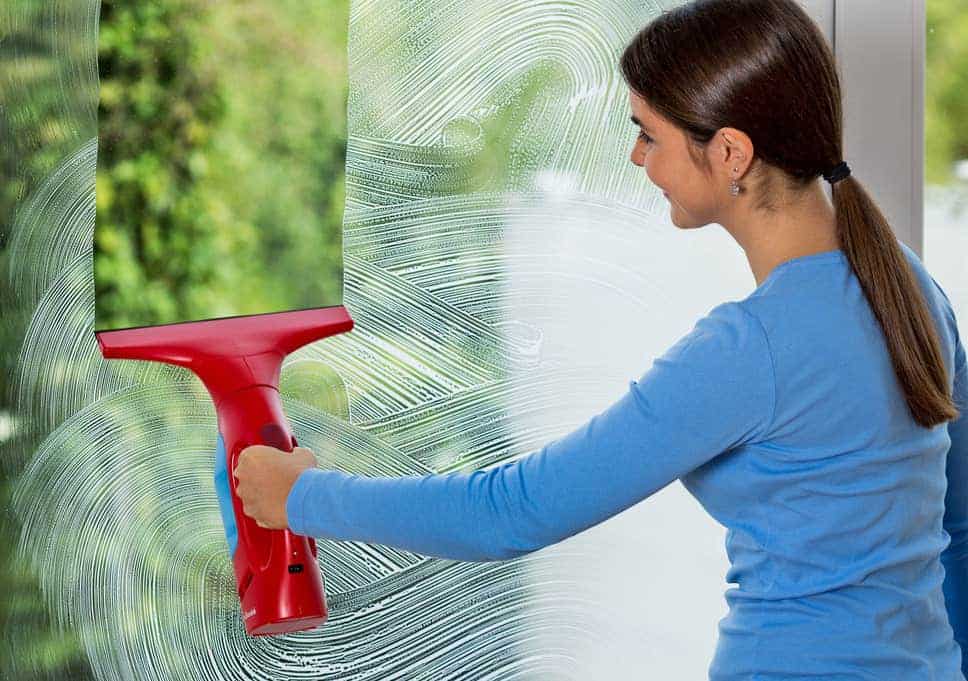
![4 Best Robotic Window Cleaners in [year] 20 4 Best Robotic Window Cleaners in 2026](https://www.gadgetreview.dev/wp-content/uploads/best-robotic-window-cleaners.jpg)
![7 Best Stainless Steel Cleaners in [year] 21 7 Best Stainless Steel Cleaners in 2026](https://www.gadgetreview.dev/wp-content/uploads/best-stainless-steel-cleaner.png)
![7 Best Portable Closets in [year] 22 7 Best Portable Closets in 2026](https://www.gadgetreview.dev/wp-content/uploads/best-portable-closet.jpg)
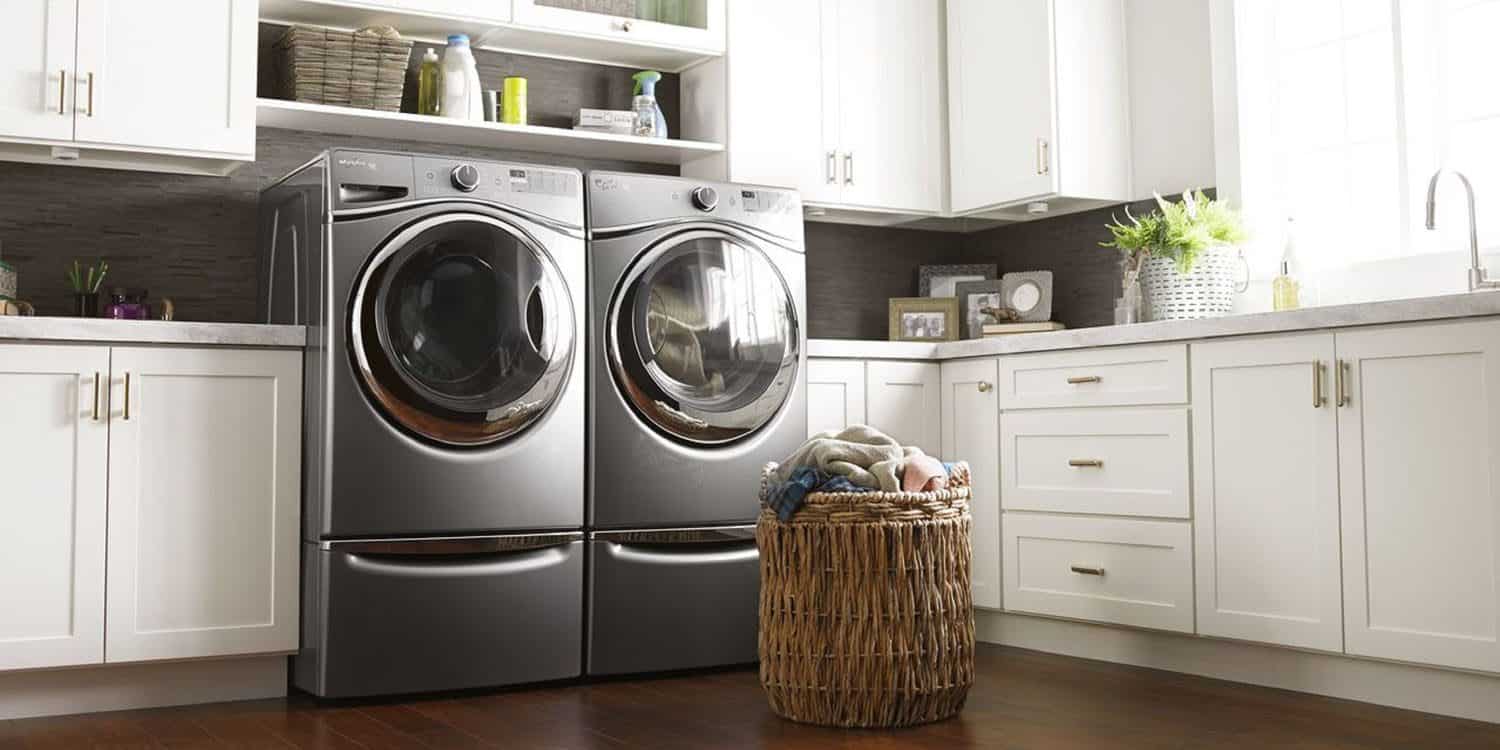
![6 Best Speaker Shelfs to Enhance Your System in [year] 24 6 Best Speaker Shelfs to Enhance Your System in 2026](https://www.gadgetreview.dev/wp-content/uploads/best-speaker-shelf-to-enhance-your-system.jpg)
![7 Best Magnetic Screen Doors in [year] 25 7 Best Magnetic Screen Doors in 2026](https://www.gadgetreview.dev/wp-content/uploads/best-magnetic-screen-door.jpg)
![7 Best Floor Sweepers in [year] 26 7 Best Floor Sweepers in 2026](https://www.gadgetreview.dev/wp-content/uploads/best-floor-and-carpet-sweeper.jpg)
![7 Best Door Stops in [year] 27 7 Best Door Stops in 2026](https://www.gadgetreview.dev/wp-content/uploads/best-door-stop.jpg)
![7 Best Dusters for Your Blinds and Ceiling Fans in [year] 28 7 Best Dusters for Your Blinds and Ceiling Fans in 2026](https://www.gadgetreview.dev/wp-content/uploads/best-duster-for-your-blinds-and-ceiling-fan.jpg)
![6 Best Shadow Box Frames in [year] 29 6 Best Shadow Box Frames in 2026](https://www.gadgetreview.dev/wp-content/uploads/best-shadow-box-frame.jpeg)
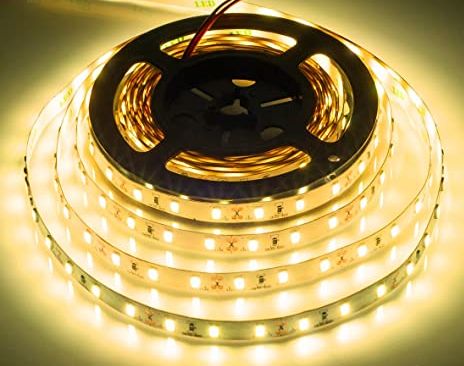
![7 Best Dripless Taper Candles in [year] 31 7 Best Dripless Taper Candles in 2026](https://www.gadgetreview.dev/wp-content/uploads/best-dripless-taper-candles.jpg)
![7 Best Furniture Repair Markers in [year] 32 7 Best Furniture Repair Markers in 2026](https://www.gadgetreview.dev/wp-content/uploads/best-furniture-repair-markers.jpg)
![4 Best Overhead Garage Storage in [year] 33 4 Best Overhead Garage Storage in 2026](https://www.gadgetreview.dev/wp-content/uploads/best-overhead-garage-storage-racks.jpg)
![7 Best Super Glues in [year] 34 7 Best Super Glues in 2026](https://www.gadgetreview.dev/wp-content/uploads/best-super-glues.jpg)
